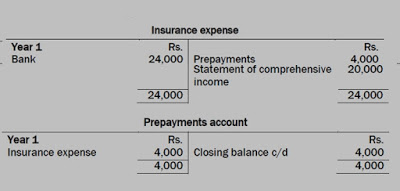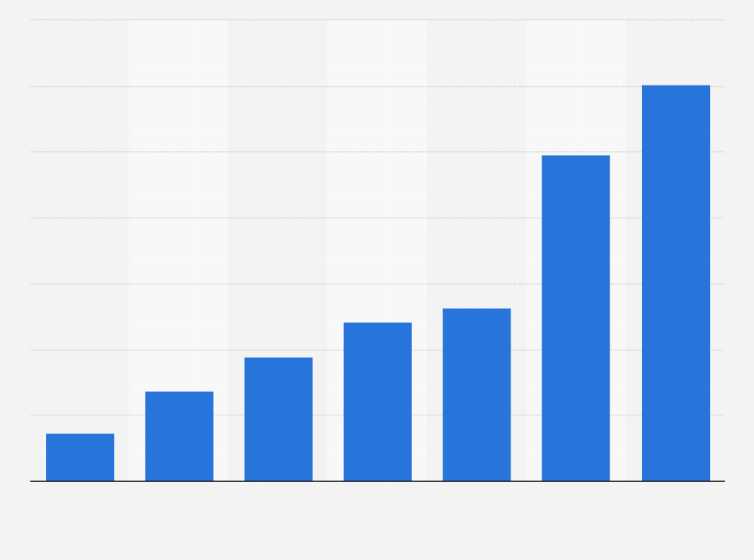
To understand how to solve the problem we need to break down a transaction and define each party’s role within a drop ship scenario. As a professional Chinese dropshipping supplier, we offer you a one-stop dropshipping solution. All you need to do is to send us your product list, and we’ll do the rest for you—product sourcing, purchasing from the factory, quality check, custom packaging & inserts, and order fulfillment. Each state has different tax rates, so you’ll have to check this individually for each state where you have a nexus.
Drop shipping can be a successful solution for sellers, but it can also add new layers of sales tax complexity. One way for businesses to make the most out of drop shipping and other innovative solutions is sales tax automation software such as Avalara AvaTax. AvaTax’s accuracy is 100% guaranteed, so you can be sure that you’re getting sales tax right no matter how your products are getting delivered. Drop shipping can be a big boon for online sellers, especially small businesses that don’t have the funds or space to stock up on and store inventory.
What is income tax?
Such person shall include the retail selling price of the property in such person’s gross receipts. Typically when we use this term, we’re referring to the freedom from any legal obligation to pay a source tax to our suppliers. There are taxes that we need to collect from customers and pay to the government. First is the retailer who accepts orders online from customers and sends them to the manufacturer/wholesaler. Next is the manufacturer/wholesaler who receives orders from the retailer and ships the product directly to the customer and bills the retailer for their products.

In general, if you have nexus in a state, you are likely the one collecting sales tax. If your vendor has nexus and you do not, the vendor is probably on the hook for collecting sales tax. While sales tax might be the first thing that comes to mind, dropshippers actually deal with a variety of different taxes. The seller receives an order request and payment from a customer.
Does Shopify Automatically Collect Sales Tax?
Like US sales tax, it’s typically levied as a flat-rate percentage, based on the value of the transaction. If you’re a Canadian company or your company sells in Canada, you will likely have to apply and collect GST instead Drop shipping sales tax of Sales Tax. GST stands for “goods and services tax” and it’s typically charged at every stage of production. The sales tax is calculated based on the tax rate of the state where you have a nexus.
Furniture Four arranges for its wholesale vendor, Chair Maker, to “drop ship” the item by directly shipping it to the customer. Please note that this list is not exhaustive and should only be used as a starting point. We recommend researching individual state statutes to determine if you have a sales tax collection responsibility there.
That article also includes a few countries that are better to be avoided when dropshipping. Here are the instructions for enabling sales tax in the United States, Canada, and the rest of the world. If you are an ecommerce company selling tangible goods (i.e. clothes, electronics, PDFs, etc.), the rule is pretty clear. You need to charge GST across the board if the destination is in Canada.
In general, if you have nexus with a state, you’re responsible for collecting and remitting applicable sales tax on sales to customers within that state. That’s true whether you use a drop shipper or deliver some other way. This cloud-based tax compliance software automates tax across all sales channels. It calculates nexus and sales tax for each location and notifies you when you’re reaching tax nexus thresholds. TaxJar helps with timelines, reducing processing time and costs, and it minimizes human error.
What is sales tax, VAT, and GST?
Tax time is not only stressful because of the various requirements that make it more complicated, but if you fail to file (or you file late), there can be some negative repercussions as a result. In this section, we’ll go through the tax penalties for each location. You may also need to pay corporation and estimated taxes at this time if you run a large company. Speak with your accountant or tax specialist to determine whether you’re liable for both. Depending on your location, you may also need to register for Value Added Tax (VAT), which is a tax assessed on the value added in each production stage of a good or service. And you can read this article here if you’re not sure yet which countries you’re going to target.
So, the income tax doesn’t depend on where your customers are from but where you’re from. When we talk about “collecting”, these are either sales taxes (US) or VAT (EU) that your end customer covers. As a business owner, it’s your responsibility to consult with local tax authorities or professionals regarding the tax rates that you must charge your customers and the process of filing tax declarations.
In both cases, the end-consumer always covers the costs, and these costs ultimately end up in the state or country’s budget. Customer is liable for payment of the remainder of the tax directly to the State of Connecticut as a use tax. Voice over Internet Protocol (VoIP) and any other form of telephony and similar services that utilize internet protocol are not included in the federal moratorium. These types of telephony and telecommunications services continue to be subject to the Alabama Utility Telecommunications Services Tax. Before sharing sensitive information, make sure you’re on an official government site. Hopefully, this post helped to break down your tax obligations in a simpler, easy-to-understand way.
- This first sale is, most likely, a “sale for resale” from your vendor’s perspective.
- It also works with small and mid-size market businesses in retail, food and beverage, medical, and of course, dropshipping.
- Last is the customer who purchases the product online and is likely unaware of everything that is going on behind the scenes.
- This is important because if the sale for resale cannot be properly documented, then the state will NOT recognize it as a sale for retail.
- Additionally, we’ll learn more in-depth about each tax and how to lessen their burden on our bottom line profits.
For example, in Germany there would be a fine of 10% of the VAT due, up to a maximum of 25,000 euros if you failed to file the VAT return. If there are errors on the VAT declaration, you could be fined 0.5% of the undeclared amount per month of delay. If you failed to pay the VAT payment all together, you would be fined 1% of the VAT due per month of delay.
Can I Avoid Paying Income Tax When Dropshipping?
For drop shipping operations to maximize efficiency and profitability, fundamental changes must be made to traditional trading partner relationships as well as B2B communication technologies. However, if a retailer uses a supplier who has nexus in the customer’s state, then that may give rise to nexus, especially if the state determines that the supplier is acting as the retailer’s agent. If you haven’t figured out already, this also meant that if you lived outside the US, you didn’t have to pay any sales tax at all!

VAT is the EU alternative to sales taxes in the US – a consumption tax that you charge at PoS from your end customers. The consumption tax that dropshippers collect at the point-of-sale (PoS) is called a sales tax in the USA. A similar concept exists in the EU, where each state has its own VAT rate – the EU equivalent of the US sales tax. To obtain a tax exemption certificate, we must contact our suppliers and prepare the necessary documents.
The challenge of sales tax nexus
Canadian businesses expected to earn over $30,000 every calendar quarter (three months) will need to register for goods and services tax (GST). We’ve made it easier for you to understand how to handle your taxes for your dropshipping business so you’ll feel better prepared come tax season. In this article, you’ll learn all about the tax structure and terminology used in dropshipping globally, and we’ll give you some pointers on how to manage your taxes efficiently. If you’re using Shopify for your dropshipping store, then this for you! But if not, then don’t worry, most ecommerce platforms have guides on how to charge taxes on their platform. Here you’ll also learn everything you need to know about the distance selling thresholds.

They’re responsible for managing and maintaining these certificates to produce in the event of an audit. However, in California and other states that have stricter requirements for resale certificates, a seller must register with the state in order to obtain a valid exemption certificate from that state. Once registered, the seller would be obligated to collect sales taxes from customers in that state — even though the seller may not have any other nexus with the state.
Stay on top of tax compliance
But if Adam sells that synth to a buyer in Kenner, Louisiana, Adam isn’t required to collect sales tax because he doesn’t have sales tax nexus in Louisiana. Drop shipping seems simple until you start thinking about sales tax. Drop shipping creates a convoluted web of possible scenarios for who collects sales tax from whom, especially when the buyer, seller, and drop shipper are spread across multiple states. You may also need to register for provincial taxes, and the rate will vary depending on your location. And as mentioned earlier, you may also need to register for Harmonized Sales Tax (HST), which is a consumption tax paid by consumers and businesses in five provinces in Canada. International customers do not pay HST, provided they use the goods outside Canada.
Each country has their own tax penalties so you’ll need to be up to speed on what the tax penalties are in your local country. You’ll need to research the specific countries in the EU where you are dropshipping to know what rates are collected and when they’re due. Whether dropshipping is your primary income or a side gig, one thing is certain; you need to get your taxes right to avoid any fatal penalties. The thing is, Shopify will collect sales tax for you, but you must configure your store to do so. Thankfully, Shopify has easy steps for enabling all of EU VAT and all of US sales tax, so you can knock out 28 countries and 50 states with one setting.
Thousands of Crypto Scammers are Enslaved by Human-Trafficking … – Slashdot
Thousands of Crypto Scammers are Enslaved by Human-Trafficking ….
Posted: Sat, 19 Aug 2023 19:34:00 GMT [source]
The most common answer is that it is in the state where nexus exists. The situation becomes more complicated by the location of the parties involved. There could be as many as three states involved in the transaction.
- Once you get the hang of it, dropshipping taxes will become just another cog in the machine that is your dropshipping business.
- It calculates nexus and sales tax for each location and notifies you when you’re reaching tax nexus thresholds.
- Since you didn’t live in any state, you’d have no nexus in the first place.
- ABC Supplies (ABC), an out-of-state retailer who is not registered to collect and pay California use tax, sells a doghouse to a California consumer.
- They also have a Knowledge Center on their website that includes a blog and content library.
A supplier’s sale to a seller is usually an exempt wholesale transaction because the seller is purchasing the goods to resell them. This is true even if the supplier has nexus and an obligation to collect sales tax in the seller’s state. However, in ten states you are required to register for a sales tax permit and collect sales tax from all buyers in that state in order to take advantage of the perks of having a resale certificate. However, things start to get more complicated when drop shipping is involved. It’s important to note that in ecommerce transactions the “point of sale” is considered to be the buyer’s “ship to” address. It doesn’t matter where the buyer is located, only where the buyer takes possession of the item after it is shipped.
